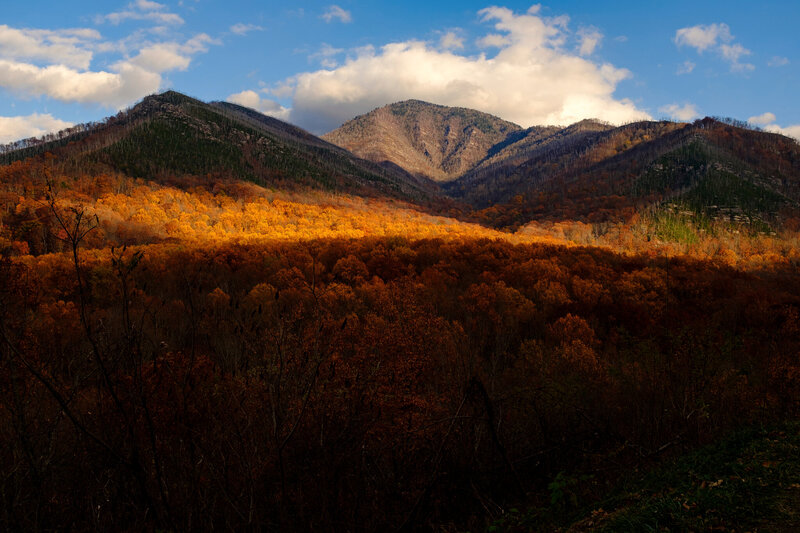Hurricane-force winds blew over eastern Tennessee ahead of Thanksgiving, closing roads and campsites in the Great Smoky Mountains National Park, according to park officials.
Around three in the morning on Tuesday, firefighters in the tiny mountain hamlet of Townsend started voluntary evacuations after strong winds fanned a wildfire on Rich Mountain Gap, which is located around five miles outside of town and surrounds a well-liked hiking route.
There was also a “red flag” warning in place for the Smokies, indicating that there was a higher chance of fire hazard due to low humidity and strong winds.
By Tuesday midday, the Townsend evacuation order had been withdrawn and 25% of the six acres of woodland that the wildfire on Rich Mountain had swiftly swept over had been controlled. The weather had marginally improved by Monday, allowing workers to start evaluating any damage to the roads and campsites that the National Park Service had closed.
The 520,000-acre Great Smoky Mountains National Park is a wilderness area that spans the border between North Carolina and Tennessee. The verdant woodlands and perennial wildflowers dominate the area.
Thanksgiving week is a busy time for tourists. Based on park statistics, almost 10% of the 11.5 million visitors in 2022 visited the park in November.
We apologize for any difficulty caused by these restrictions, but during this catastrophic weather event, we are attempting to reduce as much risk as possible.
A section of U.S. 441, a picturesque two-lane route that connects Gatlinburg, Tennessee, and Cherokee, North Carolina, via the Smoky Mountains, is closed due to road construction.
Just beyond the park, in Gatlinburg, there was a National Weather Service alert indicating steady winds of 40 mph with gusts as high as 85 mph. High winds were expected to “blow down trees and power lines” and result in “widespread power outages,” according to the statement.
How to Avoid Conflict in the Family During the Holidays
As a result of climate change bringing increasingly severe weather, national park systems now often experience temporary closures due to wind, fire, and flooding.
According to the National Park Service, the number of high wind warnings at Great Smoky Mountains National Park has increased dramatically in recent years, going from 22 in 2006 to 48 in 2022.













+ There are no comments
Add yours